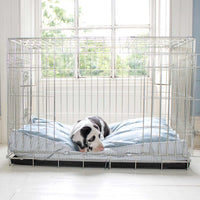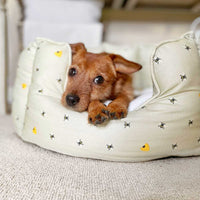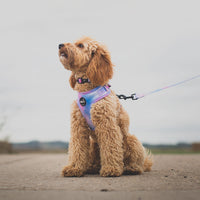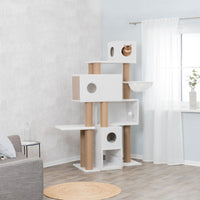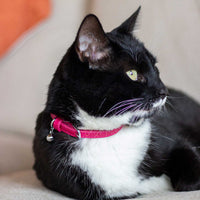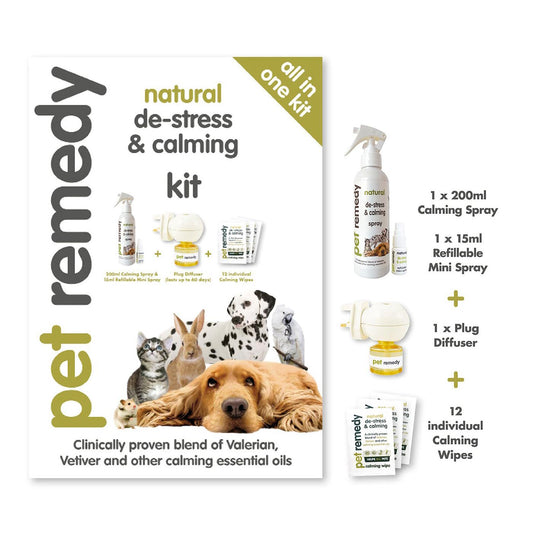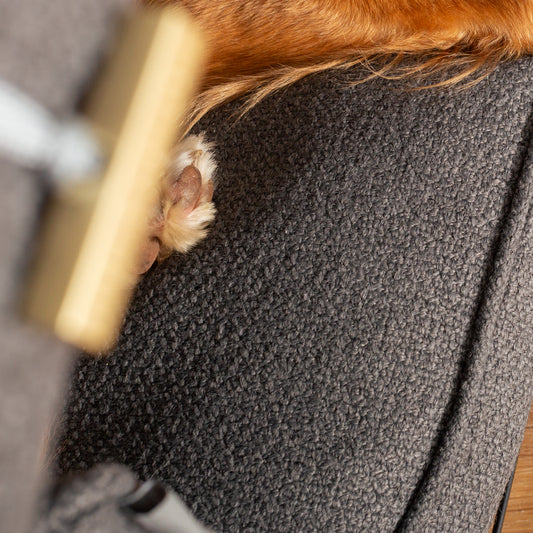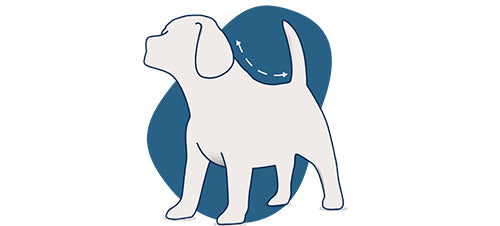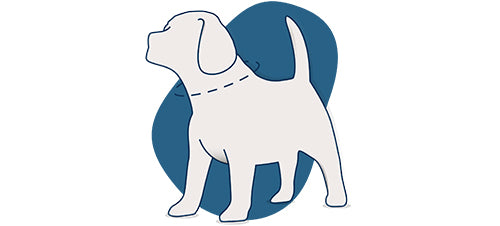Fireworks are a great way for us to celebrate, especially through the autumn and winter. With the return of the cold weather and the dark night’s drawing in, the British evenings become perfect conditions for firework use, to celebrate the likes of Halloween, New Year’s Eve and of course, Bonfire Night. However, for many pet owners, fireworks are not seen as a positive thing. A lot of dogs are easily frightened and startled by unpredictable and inconsistent loud noises, such as the noises of fireworks. In this article we discuss ways in which you can help your four-legged friend through the anxious autumn evenings containing fireworks.
Why are dogs scared of fireworks?
Many pets and other animals, including dogs, are frightened by fireworks – in fact, it is estimated that around 1 in 2 dogs show signs of fearing them. One of the main reasons they find fireworks scary include loud explosive noises and bright flashes. To a dog, occasions such as Bonfire Night are just a normal day, so when fireworks begin it is likely to scare your dog due to the unfamiliarity of them. Your pup may also look to try and escape or hide from them, which is natural. Fireworks may make your dog feel trapped, so they will look to run away from them or find a safe space where they can feel safer.
How loud are fireworks to dogs?
Dogs’ senses are not the same as humans. Though they have a worse sense of sight than us, their sense of smell and sound are much more acute than that of our own. They can easily escape the bright flashes, especially if curtains/blinds are closed. However, the sound of fireworks is difficult to escape for humans, let alone dogs. To put it into context, the average dog has 4 times better hearing than the average human, which explains their reasoning for being so scared of loud noises such as fireworks.
How to tell if your dog fears fireworks
There are a variety of signs to look out for in your dog when fireworks are going off. The severity of these signs can depend upon how frightened your pup is, the signs can include:
Mild signs – shaking, pacing up and down, heavy breathing or panting.
Moderate signs – bark more than usual, trembling, hiding, drooling.
Severe signs – destruction of toys or other in-home items, soiling unexpectedly.
What to do when a dog is scared of fireworks
If you do see any of the signs listed above in your dog when there are fireworks going off, it is likely that your dog feels frightened or scared because of them. There are a range of things you can do to try and help reduce the levels of anxiety and stress of your dog when fireworks are going off, which include:
- Closing windows and blinds in your home.
- Create a safe and comfortable hiding place.
- Drown out the blasts with background noise from a radio or TV.
- Walk them in the daytime prior to fireworks going off (if you must walk them in the evening, we advise on-lead only when fireworks are going off.
How to relax a dog during fireworks
It is important to act normally and in a calm way with them as dogs are sensitive to changes in your mood, so if you start acting strangely, they will think something is wrong. We also recommend creating a safe, comfortable, and compact space for them that they can hide away in, this will ease their stress levels. The best way of doing this is with a Lords & Labradors Crate Set – the perfect cosy den for your pup to retreat to for a snooze or to escape moments of fear and anxiety.
How to calm an anxious dog during fireworks
Keeping any dog calm during fireworks can, at times, be a struggle for many pet owners. The loud blasts that cause your pet higher levels of anxiety than usual can be a troubling time, especially on Bonfire Night. However, if you find that you have an anxious dog, or your dog seems stressed during fireworks then it may be worth purchasing anti-anxiety products to reduce their stress levels. At Lords & Labradors we understand that your dog may have moments of anxiety and stress, this is why we offer a range of calming and anti-anxiety products to aid them through stressful times, such as Bonfire Night and Halloween.
Can dogs be trained to ignore fireworks?
Training your dog to ignore fireworks or just to get used to them is like training a dog anything else. If you have a puppy, then it will be easier and take a shorter amount of time to get them used to fireworks. However, if your dog has an underlying and deeper fear of them, then this will be much more difficult.
How to get a dog used to fireworks
The best thing to do is to get them used to loud noises gradually. Start by turning up the TV/radio to high volumes to acclimatise them to loud noises, this may work best with action films with gunshots that make similar explosive sounds to fireworks, or find recordings or videos of firework sounds online. Whilst playing these loud sounds for your dog, reward them for being calm with treats and ensure they have a hiding place where they can feel safe. Build this technique up with real fireworks whilst rewarding your dog. We would also advise staying close to them for as often as possible to support them through their fears.

























































